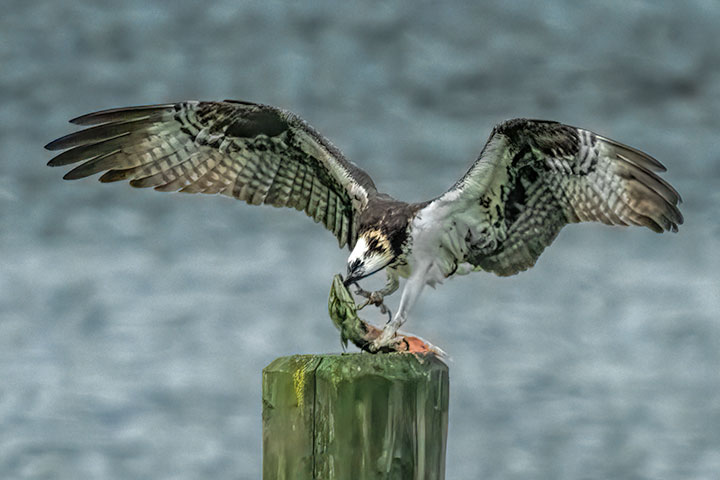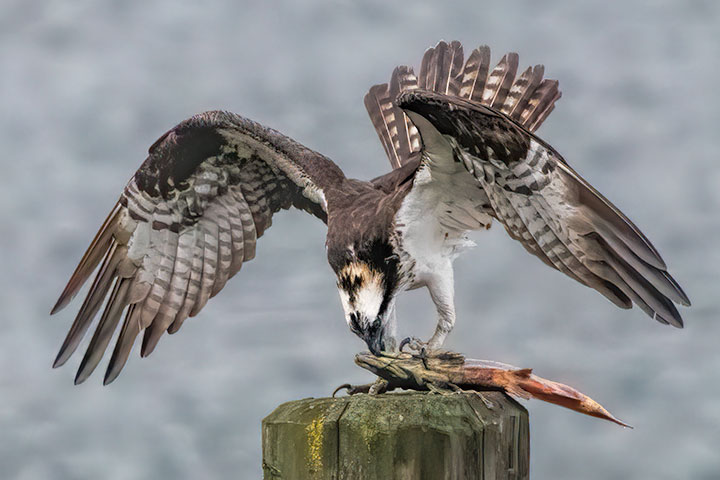Around mid-September adult ospreys migrate. They have nested, raised chicks, and sent them off on their own. Now is the time to head south for the winter. However, that requires building up fat reserves by feasting on fish. (Juvenile ospreys migrate separately a few weeks later.)
Earlier in the week, an adult osprey fed in the early morning light. It spent most of its time feeding on the piling with its wings folded. But, occasionally it raised its wings to adjust the position of its fish, and that made for a couple of dramatic shots.



Thanks Alistair. I didn’t realize the juveniles migrate later. Your commentary is valued as much as these visual treasures.
Great shots and appreciate the reminder. I’d forgotten how early they leave our area. It’s been great seeing them.
Great pictures! How far south do they migrate?
Sara, local ospreys migrate to Central America and northern South America.
In January/February we see osprey in southern Mexico along the Oaxaca coastline. I always wonder if they might be “our” Kootenay Lake birds.
I have watched many Osprey cams over the years and found the female is the first to leave on migration. The male sticks around and brings fish for the juveniles. In one case the Juvenile had an injured wing. We think it was injured in an attempt to get is own fish. The chick stayed on the nest and the male brought fish to her until she was able to fly. When she left, they both left. Some tracking birds have had an adult with them on the migration. This may not happen all the time but Osprey don’t follow rules of the books!
Mary, those are really nice observations. I would add that it seems that the female also arrives in the north later than the male — so, last in, first out.